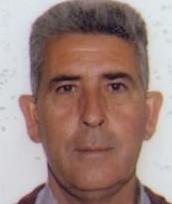Daniel Comboni
Comboni Missionaries
Institutional area
Other links
Newsletter
In Pace Christi
Benjumea Ramos Juan
Juan Benjumea Ramos was born on 29 March 1938 at Paradas, a small town of whitewashed houses in the countryside of Seville, in the south of Spain. There were seven children in his humble, Christian family who lived by working in the fields and Juan, before he was ten years old, had to leave school to lend a hand. He also began from a tender age to work as an apprentice carpenter.
His passion for bullfighting also began very early: while only ten years old he began to practice in the small arenas of the nearby holdings – belonging to Conde de la Maza and José Benítez Cubero – where bulls were reared. He was quite good, so much so that he began to think of becoming a torero, since this would also help his family economically.
So it was that the years of his youth were marked by work and bullfighting, though he never neglected his Christian faith, attending Mass and going frequently to confession. There was one particular moment in his journey of faith in 1961 when he took part in the “cursillos” in Los Negrales (Madrid). He was 23 years old. “I remember how I felt I had been gored and thrown to the ground and from that moment I placed myself at the disposal of the One who threw me: Jesus himself”, he wrote in his diary. That was the start of an internal combat between his two vocations: torero and committed Christian. He continued to frequent various Christian communities in Madrid and Seville while continuing his activity as a torero, even reaching the most important arena in the world, Las Ventas in Madrid, on the evening of 7 August 1965. However, his performance was not one of his best and, despite the confidence many had in him he decided to abandon the bullring because, as he would write in his diary, he realised that in that world “he would never find what he was looking for: freedom to serve God alone”.
He lived for two years in Madrid, working as a carpenter and blacksmith after which he moved to Seville: he had come to know of the magazine Mundo Negro, and came into contact with the Comboni Missionaries. Soon afterwards, he was offered the possibility of beginning his formation as a Brother candidate. In September of 1968 he went to the house of Moncada (Valencia). At first he easily adapted to the life of the postulancy but, as the months passed, he began to feel somewhat dissatisfied and decided to leave. Fr. Giovanni Bressani, who saw in him a clear vocation, left the door open for him if he ever wanted to return.
Juan again settled in Madrid where, with two friends, he opened a workshop for oil painting and water colouring. Meanwhile, he continued his spiritual search and kept in touch with the Combonis in Moncada until, in September 1970, he resumed his formation. In March 1972 he took his first vows and as a first appointment, was sent to Santiago de Compostela where work was beginning on the minor seminary and where his professional experience was of great help. Those years were filled with hard work and missionary animation in all of Galizia; however, they did not succeed in removing his vocational doubts. Tempted by the ideals of poverty and total self-giving, in October 1975 he wanted to join the Little Brothers of Charles de Foucauld, but obedience to his spiritual director and his provincial superior, Fr. Enrico Farè, prevented him. He was, in fact, appointed to the Comboni province of Ecuador and left by boat that same month on a journey that took nineteen days.
He was first assigned to Esmeraldas where he carried out various works and then to El Carmen. In that parish, on 15 July 1978, Juan took perpetual vows. Besides his work as a Brother, building and repairing what he could, Juan also gave spiritual leadership to the communities. Some people asked for confession which made Juan think of the possibility of becoming a priest. He informed his superiors of this desire of his in 1982. He was allowed to resume his studies where he left off while very young but failed in his attempt to enter the university for adults in Granada. He therefore returned to Quito and when the international scholasticate was opened in Lima, he joined the first group of Comboni students at the John XXIII Higher Institute in the capital. He succeeded in completing his studies in 1989 and, on 6 January 1990, he was ordained priest by Mons. Enrico Bartolucci in the cathedral of Esmeraldas. A week later, at the age of fifty-one, he already found himself in his new appointment: the parish of San Lorenzo. He worked very hard there for five years serving the mission until late in 1994 when he was recalled to Spain to work in missionary animation. On 25 July 1998 he was allowed to return to Ecuador, assigned to the mission of Borbón.
He returned to Spain at the end of 2015 showing the first symptoms of the illness that would result in his death. He died on 21 September 2018 at Moncada, in the same month and in the same community that had received him as a postulant fifty years previously.
Da Mccj Bulletin n. 278 Suppl. In Memoriam, gennaio 2019, pp.104-111.

